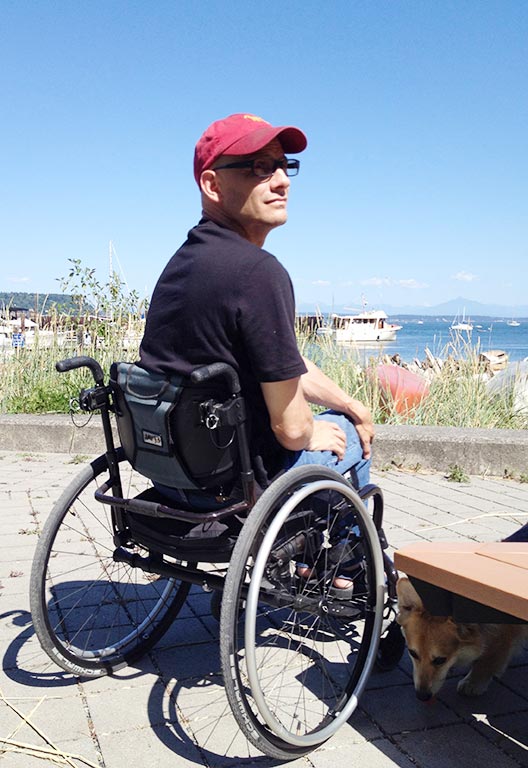MY STORY

My official name is Ralph Earle, III, but most everyone calls me Randy. At the age of 27, I was diagnosed with a rare, hereditary disorder called Adrenomyeloneuropathy, or AMN.
The moment I was diagnosed, my life changed forever. Today, 15 years later, I face barriers, physical, attitudinal, and systemic, which make access a challenge.
Because of that I have experienced the many ways in which businesses fail to serve the needs of their customers with disabilities. This dynamic program offers businesses hands on consulting and support so they can increase access.
We Will Find a Way to Increase Access is an exploration of issues faced by people with disabilities of all kinds, a process that has evolved since that day of diagnosis in 1996. My desire to be in the world has not changed from the days I walked freely with ease.
Adrenomyeloneuropathy, or AMN, is a debilitating disorder that causes significant damage to the spinal cord, the adrenal gland, and the thyroid gland. It is an x-linked, hereditary condition. Symptomatic men are more severely affected than women.
A person with AMN cannot break down Very Long Chain Fatty Acids which eat away at the myelin sheath around the spinal cord and damage both the adrenal and thyroid glands.
Because the myelin is damaged, messages from the brain don’t flow smoothly to the lower body. Spinal cord dysfunction causes:
- Increased weakness in the lower extremities
- Increased muscle stiffness
- Loss of the ability to coordinate muscle movement
Generally, the symptoms of spinal cord dysfunction do not present themselves until around the age of 28.
At this time, there is no cure for AMN.
